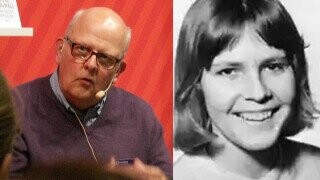Sweden's Most Famous Serial Killer Didn't Kill Anyone

In 1990, a man calling himself Thomas Quick tried to rob a Swedish bank, dressed as Santa Claus. For this, he was sentenced to confinement in a mental hospital. He wasn't judged to be insane just because he dressed as Santa—they discovered he had some serious mental issues when they first took him into custody, and they sent him into psychiatric care. And while under care, he revealed that he had done some stuff much more serious than just robbing a bank.
A decade earlier, an 11-year-old boy had famously gone missing. Quick revealed that he had murdered the boy, and chopped him into pieces. He also confessed to killing a famously missing nine-year-old girl. He didn't seem quite clear on what color hair the girl had, or exactly where she'd lived, but he was confident about having killed her. He revealed where he'd left her body parts, and police checking those woods found bone fragments, confirming his story.
The confessions kept coming: Quick said he'd killed 30 different people, in supremely brutal ways. He'd chopped off one victim's head and used it as a football. He'd eaten one child's fingers, earning Quick the nickname "The Cannibal." Unlike most serial killers, he didn't appear to have a fixed MO. He killed people of all ages. He killed in different places and using different methods. All this just showed what an especially evil killer he was, people reasoned, and a court convicted him of eight murders.
But objections came from an unusual source: the family of one of the victims, who said Quick's story didn't sound convincing at all. And when investigators now looked closer at all the cases, they realized Quick had been convicted based on his own testimony alone, without a single piece of physical evidence. Those "bone fragments"? They were really charred wood. He had alibis for several of the murders, confirmed by photos.
Quick ended up recanting all his confessions, and the courts overturned the convictions. Why had he falsely claimed to kill all those people? He said he was "very lonely" and had been locked up in a place full of criminals, so he thought he'd claim credit for crimes so he could fit in. That might not make much sense, but then he was extremely high during much of his stay in the hospital. Also, his doctors might have noticed that he'd taken some details right out of the novel they'd given him: American Psycho.
This fact came from the One Cracked Fact newsletter. Want more like this, straight from your email inbox, without any ads or popups? Join here:
For more on false confessions, check out:
The Feds Wrongfully Convicted Four People, Knowing The Real Killer Worked For Them
7 Ways Police Can Brainwash You Into A False Confession
Scary (And Infuriating) Reasons Murders Don't Get Solved
Follow Ryan Menezes on Twitter for more stuff no one should see.
Top image: A.J. Andersson
